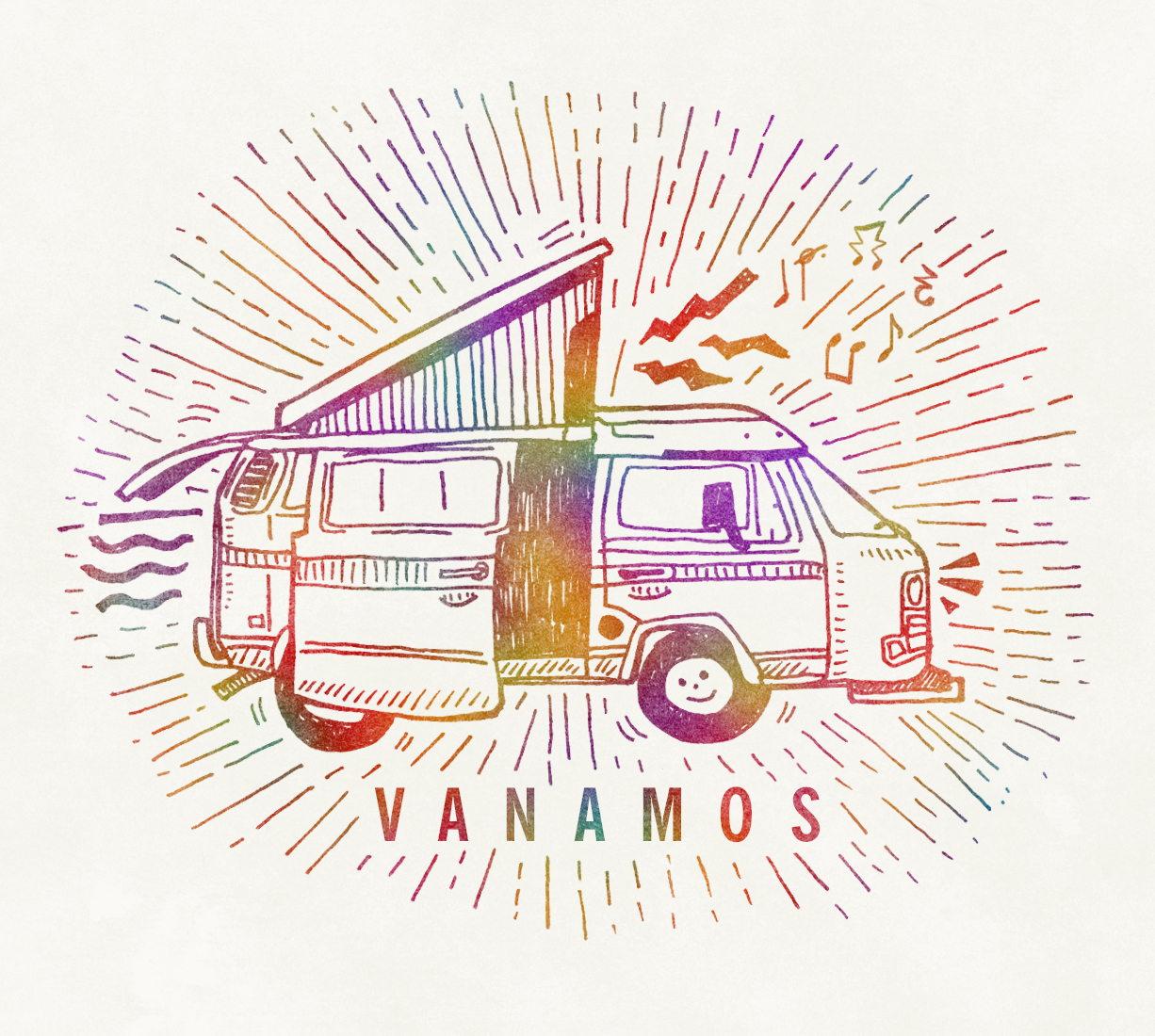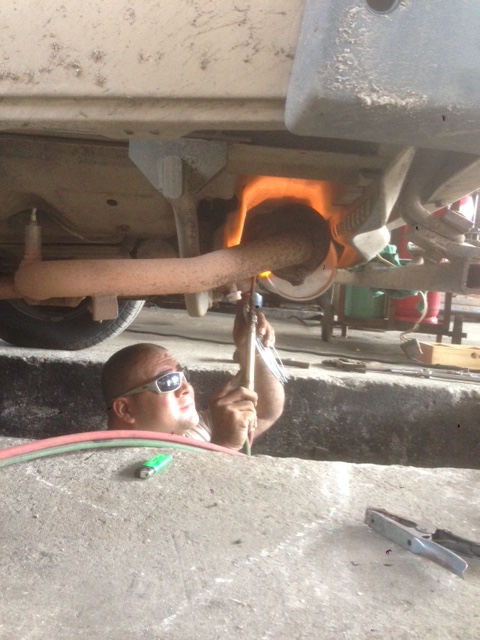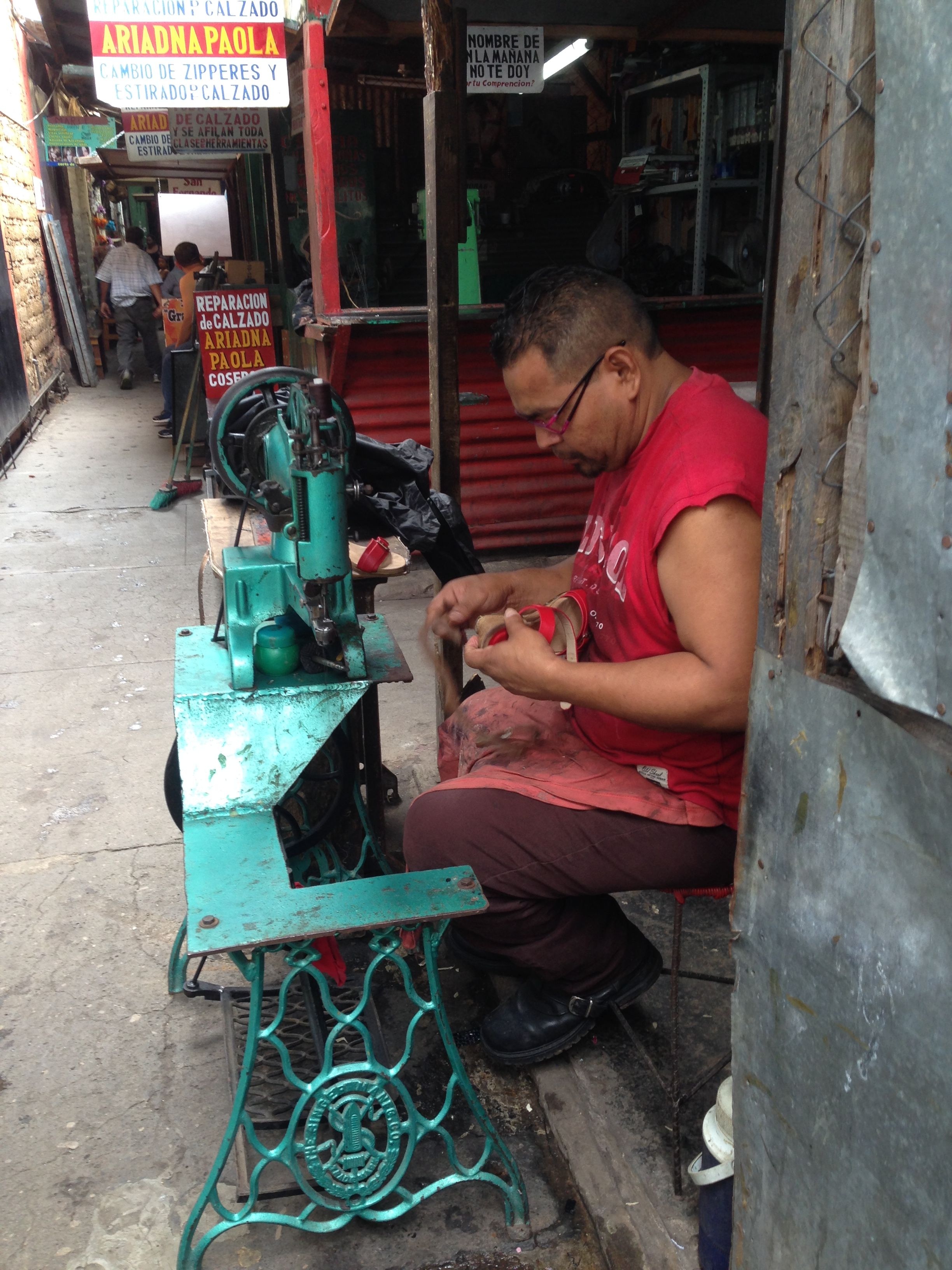We try to avoid cities because we hear they are more dangerous, we know there’s more traffic, and we want to go to sleep at night to the sounds of mountain streams and howling dogs not to the sound of honking horns and howling dogs. Sometimes we make exceptions. After leaving Nicaragua and driving all day through Honduras into El Salvador, we spent the next day driving a few hours into the mountains of El Salvador to the town of Perquin. The next day, I had already driven five hours towards our planned destination, and we were still two hours away. I was done. When I saw a sign for Santa Ana, a place I remembered reading about as being worth a visit, I asked R to check out our guidebook to see about it.
R reported that at some point I had scribbled a note in our book that Fanny and Joe recommended the city and specifically, a hostel where they stayed. Fanny and Joe are good people we met in Costa Rica while building the Buena Casa. We ran into them again briefly in Panama City and hiked up Cerro Ancon for grand views over the city and Panama Canal. They’ve spent the year couchsurfing through South and Central America and we trusted their judgment so decided to scrap our original plan and head for Santa Ana instead.
Santa Ana is the second largest city in El Salvador, behind the capital of San Salvador. It is quaint in that men play checkers in the park with colored bottle caps on checkerboards painted onto the cement tables and sketchy in that the streets are cracked and dirty and there is a red light district around the corner from the hostel (prostitution is legal in El Salvador, as it is in other Central American countries). Some other guests in the hostel were held up at machete-point when they hiked a nearby volcano. They paid $10 to be left alone.
The hostel itself, Casa Verde Hostal, is one of the nicest we have visited. It’s super clean. There is free bottled water, a amazingly equipped kitchen, hundreds of DVDs, a book exchange, pool, laundry service, and free parking in a secure lot. They even left a pack of cigarettes on the roof deck table. “Look,” I said to R, “They even have free cigarettes for the guests!” It turned out the pack belonged to another guest - he had forgotten it there.
Santa Ana was also a good place to have some repairs done on Wesley. It needed a new muffler because the previous one (possibly the 31-year old original) lost its tailpipe and had a hole in it.
The mechanic who installed the new muffler spent most of an hour fabricating a new bracket to hold the muffler in place (the original rusted off) and then welding it to the undercarriage of the van. The ingenuity to manufacture this part was impressive. In the States the shop would likely have had to order the part with no thought given to making it. But I worry that whatever is in the muffler that does the actual muffling has been fried. Smoke was pouring out of the thing while the guy was welding the pieces of the metal bracket together around the muffler.
One section of the local market was dedicated to tinkerers and tailors and woven goods makers, so we were also able to have the zipper on one of our bags repaired for $1. R and I are always impressed that things are fixed here rather than discarded and replaced. There was even a guy in the market selling empty glass bottles. Nothing is disposable here (except the millions of plastic bags and plastic bottles that are everywhere). Even the rusted bracket for our muffler got thrown into a pile of other rusted metal at the mechanic shop. I bet if I come back in ten years, it will still be there.
The market is one of the best we have seen since Mexico for fruit and vegetable varieties – the radishes are as big as cannonballs – so we’ve eaten our greens.
R and I have spent a lot of time lately discussing whether Coconut and J have learned anything this year. They spend a lot of time looking at their screens, but they are not self-motivated students so are not looking at educational stuff that we would like them to watch like documentaries, recipes, and Neil Young song lyrics. In an effort to force feed them learning, we took them to the Museo de la Revolución Salvadoreña in Perquin.
The rope bridge traversing the Perquin guerrilla camp has been reinforced since the days that it was in use during the Salvadoran Civil War, 1980-1992.
Poster in protest of US sponsored bombing of El Salvador, on display at the Revolution Museum in Perquin.
A hospital bed at the re-constructed guerilla camp in Perquin. Guerillas lived and fought in the jungle-covered mountains of northern El Salvador for 12 years.
During the 12-year Salvadoran civil war, which ended in 1992, the town was a stronghold of the guerrillas who were fighting against the right-wing oligarchy, which, incidentally, was supported by the U.S. government. During the most brutal incident of the war, soldiers of the U.S.-trained elite Atlacatl Batallion entered the nearby village of El Mozote, rounded up its inhabitants and other campesinos taking refuge there, and tortured, raped and murdered everyone - over 1,000 people - many of whom were children. One woman survived.
R and I think that coming to Perquin on the heels of visiting Somoto, where Nicaraguan guerrillas got bombed by their own oppressive and repressive government (which, incidentally, was supported by the U.S. government), has added to the lessons about Central American politics (and why the U.S. keeps sticking its nose in them) Coconut and J have been exposed to already this year. It may have also taught them that sometimes the countryside isn’t too safe either.













